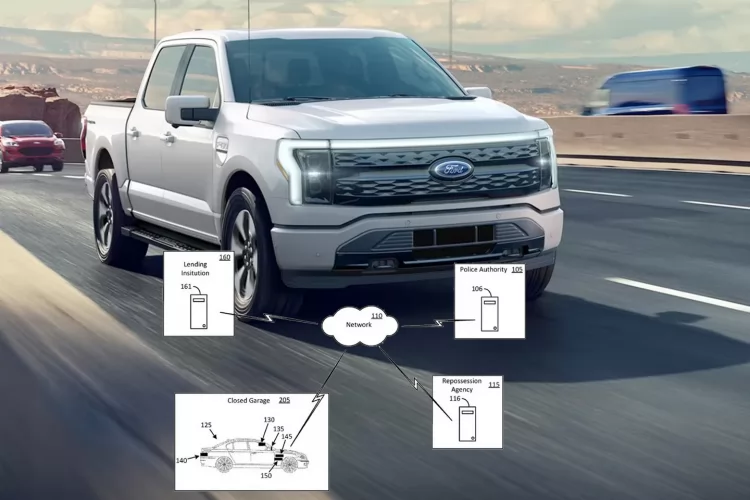This guide will equip you with vital strategies to safeguard your vehicle against harsh winter conditions. By understanding how to prepare your car for the elements, you can prevent expensive damage and ensure safer driving experiences throughout the cold months. From tire care to battery maintenance, this post will walk you through every vital step necessary to keep your car in top shape during winter weather. Embrace these tips to protect your investment and enjoy peace of mind on the road.
Key Takeaways:
- Regular Maintenance: Ensure your vehicle undergoes routine checks, including battery health and fluid levels, to withstand winter challenges.
- Tire Preparation: Invest in winter tires for improved traction and performance in icy conditions, optimizing your safety on the road.
- Protective Measures: Use a quality car cover and apply wax to safeguard the paint and finish from harsh winter elements like snow and salt.
Understanding Winter Conditions
Your car faces a unique set of challenges during the winter months. As temperatures plummet and conditions worsen, it’s crucial to grasp the various hazards that can jeopardize your vehicle and your safety. From icy roads to heavy snowfall, understanding these winter conditions allows you to take the necessary precautions to safeguard your vehicle and ensure your driving experience remains safe.
Common Winter Hazards
Conditions during winter can change rapidly, presenting numerous hazards that you should be aware of. Black ice is among the most dangerous road conditions, as it is often nearly invisible and can cause loss of control. Heavy snowfall can also result in reduced visibility and travel disruptions, hampering your ability to navigate carefully. Additionally, freezing temperatures can lead to complications such as battery failures or tire pressure drops, which may leave you stranded in precarious situations.
Impact of Cold Weather on Vehicles
The impact of cold weather on your vehicle is significant and multifaceted. Extreme temperatures can cause various issues, including battery performance drops and thickening of engine oil, which can affect your vehicle’s ability to start and operate efficiently. The cold can also lead to tire deflation, increasing the risk of blowouts and poor traction on slippery surfaces.
Winter presents a unique set of challenges for your vehicle, and neglecting these can lead to costly repairs or dangerous driving situations. Regular maintenance is paramount, including checking fluid levels, inspecting the battery, and ensuring your tires are properly inflated and rated for winter conditions. Being proactive about these aspects can help you maintain optimal vehicle performance, even in the harshest winter weather.
Preventive Maintenance Tips
One of the best ways to ensure your vehicle withstands winter’s harshness is by engaging in routine preventive maintenance. This not only protects your investment but also enhances safety on icy roads. Here are some vital tips:
- Inspect and replace your battery if needed.
- Keep your tires in check and consider winter-specific options.
- Check fluids to ensure proper function and protection.
Thou can find more detailed strategies in our resource on How to Protect Your Car in the Winter.
Battery Care for Cold Weather
Care for your vehicle’s battery takes on new importance during winter months, when low temperatures can significantly reduce a battery’s lifespan and performance. Ensure your battery is securely mounted and free from corrosion, as this can hamper its function. Conduct a battery test before winter sets in, especially if your battery is over three years old, to avoid being stranded in the cold.
If your battery is weak, consider replacing it with a winter-grade battery that is specifically designed to handle colder temperatures. Additionally, keep a set of jumper cables in your car in the event your battery fails. Having this preparedness can save you from being stuck in the freezing cold.
Choosing the Right Tires
Tips for selecting the right tires for winter conditions can’t be overstated. It is crucial to invest in high-quality winter tires, which are engineered to provide better traction, handling, and braking in icy and snowy conditions. The tread patterns and rubber compounds in winter tires offer improved grip, giving you greater control when navigating slippery roads.
Choosing all-season tires might seem practical, but they often won’t provide the same level of safety as dedicated winter tires. Many drivers underestimate the importance of having specialized tires during harsh weather, leading to increased risks of accidents. If you frequent areas with heavy snowfall, it is advisable to use tires that specifically indicate their capability for snowy conditions.
Essential Fluid Checks
Essential checks on your vehicle’s fluids can significantly impact its performance during winter months. Start with your engine oil, as switching to a lighter viscosity oil specially formulated for cold weather can improve your engine’s efficiency and startup. Additionally, inspect your windshield washer fluid; it should be rated for freezing temperatures to avoid slush and grime obstructing your view.
Make sure also to check your coolant levels, as they protect your engine and prevent it from freezing in extreme cold. Look out for leaks or worn hoses that could lead to overheating when temperatures do rise slightly. Keeping these fluids at their best will help keep your engine running smoothly during wintry conditions.
Another vital aspect is ensuring that your vehicle’s brake and transmission fluids are not only filled but also clean. Contaminated fluids can lead to poor performance in frigid weather, thereby increasing the risk of breakdowns or even accidents on the road. It’s all about sustaining optimal performance, especially when every detail counts in harsh winter weather.
How to Prepare Your Car for Winter
Now that winter is approaching, taking proactive steps to prepare your vehicle is important. The harsh winter conditions can wreak havoc on your car if you don’t ensure it is ready for the challenges ahead. From inspecting vital components to equipping your vehicle with the right emergency supplies, you must perform an array of tasks before the cold weather sets in.
Pre-Winter Inspections
Some critical inspections must be carried out to keep your car functioning efficiently during winter. Start by checking your battery; cold temperatures can diminish its performance significantly. Ensure that your battery connections are clean and tight, and if your battery is more than three years old, consider having it tested for reliability.
Additionally, inspect your tires, as they are your only contact with the road. Ensure that your tires have adequate tread depth, as this will help you maintain grip on icy roads. It’s also wise to rotate your tires if you haven’t done so recently and check the tire pressure regularly, as it can decrease in colder weather.
Storage Solutions for Unused Vehicles
With colder weather drawing near, you may choose to store vehicles that you won’t be using regularly. Parking your vehicle in a garage or under a car cover can shield it from the elements. If garage space is limited, consider investing in a weather-resistant tarp specifically designed for vehicles.
Your storage solution should also include disconnecting the battery to prevent it from draining over time. Additionally, filling up the gas tank can help avoid moisture buildup in the fuel tank and lines, which can affect your car’s performance when you’re ready to use it again.
Emergency Kits for Winter Travel
Kits designed for winter emergencies can make a significant difference if you find yourself in an unexpected situation. Equip your car with important tools such as a flashlight, blankets, non-perishable snacks, and a first aid kit to ensure you are prepared for any unexpected delays. A shovel and ice scraper are also handy for clearing snow and ice, and sand or cat litter can be used for added traction if your vehicle gets stuck.
Understanding the unpredictable nature of winter weather means you should personalize your emergency kit according to your needs and driving habits. Include items like jumper cables, flares, and extra warm clothing to enhance your safety. This way, you can navigate the winter season with a decreased sense of anxiety, knowing you’re prepared for any situation that may arise.
Driving Safely in Winter Conditions
All drivers must be aware of the unique challenges that winter weather poses. Snow, ice, and freezing temperatures can significantly affect your vehicle’s handling and increase the risk of accidents. Knowing how to navigate these conditions is vital to ensure your safety and that of your passengers. With proper preparation and awareness, you can tackle the winter roads confidently.
Tips for Maintaining Control in Snow and Ice
Winter weather can create treacherous driving conditions, but you can stay in control with a few strategies. First, always reduce your speed when driving on snow or ice. This gives you more time to react to unexpected hazards and reduces the chances of losing control of your vehicle. Additionally, you should increase your following distance, allowing for more time to stop if necessary.
- Ensure your tires are suitable for winter conditions.
- Avoid sudden movements and sharp turns when steering.
- Use gentle pressure on the brakes to avoid skidding.
- Apply the gas slowly to maintain traction.
- Keep your lights on for better visibility.
Recognizing changes in your vehicle’s behavior can also help you react appropriately. If you feel your car starting to slide, steer gently into the direction of the skid, and avoid slamming on the brakes. Staying calm and focused will greatly assist you in maintaining control during adverse conditions.
Best Practices for Winter Driving
One of the best practices for winter driving is to ensure your vehicle is prepared for the elements. This preparation includes having your battery tested, checking your antifreeze levels, and ensuring your windshield wipers are functional. Moreover, you should always keep an emergency kit in your car with vitals, such as blankets, a flashlight, and non-perishable snacks, in case you find yourself stranded.
Tips for effective winter driving include enhancing your awareness of the road and weather conditions. Always check the weather forecast before hitting the road and adjust your driving plans if bad weather is expected. Additionally, be proactive by informing others of your travel plans for added safety. Keep your fuel tank at least half full to avoid running out in case of delays, and always have your vehicle in good working condition. Dealing with winter weather can be daunting, but by following these best practices, you can drive confidently and safely throughout the season.
Conclusion
As a reminder, protecting your car from harsh winter conditions is not just about avoiding damage; it’s also about ensuring your safety and maintaining your vehicle’s performance. By taking proactive steps such as investing in high-quality winter tires, regularly checking your battery, and keeping your fuel tank full, you can significantly reduce the risks associated with winter driving. Additionally, routine maintenance and the application of protective coatings will help shield your vehicle from harmful elements that winter weather can bring.
By incorporating these strategies into your winter car care routine, you will be better prepared to face the cold months ahead. You have the power to extend the life of your vehicle and make your driving experience safer and more enjoyable. Prioritize these methods, and your car will not only survive the winter but thrive through it, ensuring peace of mind while on the road.
Q: What are the crucial steps to winterize my vehicle?
A: To effectively winterize your vehicle, start by checking the antifreeze levels and ensuring it is adequate for low temperatures. Inspect the windshield wipers and replace them if necessary, since clear visibility is vital in winter months. Moreover, consider switching to winter tires for improved traction on icy roads. Don’t forget to check the battery health, as colder temperatures can reduce its efficiency. Lastly, ensure that your car’s lights are working well to maximize visibility during shorter daylight hours.
Q: How can I protect my car’s exterior during winter?
A: To protect your car’s exterior during winter, apply a quality wax or sealant before the snowy season begins. This acts as a barrier against road salt and other harsh elements. Additionally, try to wash your car frequently throughout the winter, especially after heavy snowfalls or storms, to remove any salt and grime that can cause rust. Also, consider using a car cover if you park outside, as it offers an extra layer of protection against snow accumulation and ice formation.
Q: What maintenance should I perform on my car in winter months?
A: Regular maintenance is vital for keeping your vehicle in optimal condition during winter. Start by checking the tire pressure frequently, as it can drop with lower temperatures. Additionally, inspect and change engine oil as needed, utilizing a winter-grade oil if your vehicle recommends it. Pay attention to the brakes and ensure they are functioning properly since stopping distances can increase on slippery surfaces. Furthermore, keep an emergency kit in your car that includes blankets, food, water, and a flashlight to stay prepared for any winter emergencies.



